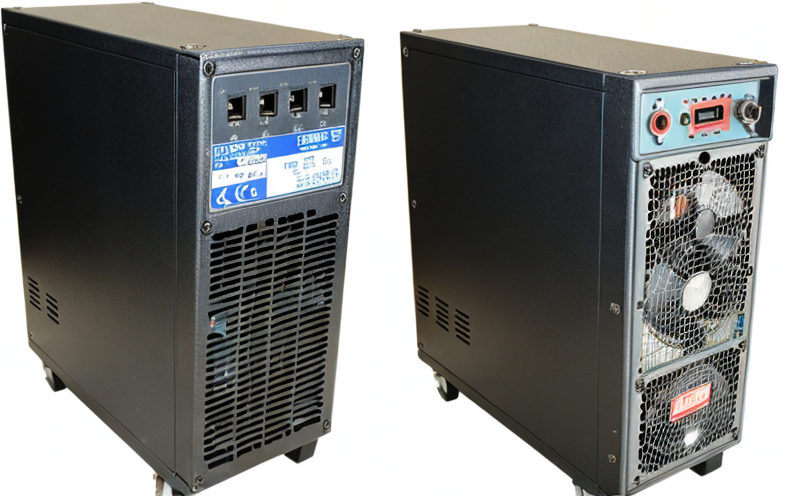Power supply unit inspection
The power supply unit (PSU) is a critical component in any electrical and electronic system. It converts one form of electrical power to another, ensuring that the correct voltage and current are delivered to the components within the system. Proper functioning of PSUs is essential for the reliability and longevity of equipment across various sectors including telecommunications, automotive, medical devices, consumer electronics, and industrial machinery.
Inspection of a PSU involves several key steps: visual inspection, electrical parameter measurement, thermal analysis, and functional testing under specified loads. Visual inspections ensure that there are no visible signs of damage or wear. Electrical parameter measurements include checking voltage stability, current draw, efficiency, and ripple and noise levels. Thermal analysis is crucial for identifying potential overheating issues which can lead to component failure over time.
Functional testing involves applying known load conditions to verify the PSU's ability to supply power under various stress scenarios. This helps in assessing its performance under real-world operating conditions. Compliance with international standards such as IEC 60950-1 ensures that PSUs meet stringent safety and quality requirements, which is paramount for ensuring product reliability.
During the inspection process, it's important to understand how different factors like input voltage variations, ambient temperature changes, and load fluctuations can affect PSU performance. Proper calibration of test equipment and adherence to standard protocols are crucial to obtaining accurate results.
The outcome of a successful PSU inspection is a comprehensive report detailing all findings along with recommendations for any necessary corrective actions. This ensures that the PSU meets not only internal quality standards but also applicable regulatory requirements, thereby enhancing overall system performance and safety.
Why It Matters
The importance of power supply unit inspection cannot be overstated in today's technologically advanced world. A reliable PSU is fundamental for maintaining the integrity of electronic equipment across diverse industries. Failures in PSUs can lead to unexpected shutdowns, data loss, and even more severe issues like fires or explosions.
For quality managers and compliance officers, ensuring that all components including PSUs adhere to relevant standards helps maintain brand reputation and customer trust. R&D engineers benefit from thorough inspections as they provide insights into potential improvements needed for next-generation designs.
In the context of procurement, selecting suppliers who undergo rigorous PSU inspection processes guarantees receiving products that meet high-quality benchmarks. This is especially crucial when dealing with critical applications where downtime could result in significant financial losses or even safety hazards.
Comprehensive PSU inspections contribute significantly towards extending the life cycle of electronic devices by preventing premature failures due to suboptimal power delivery. By addressing these issues early on, organizations can save costs associated with repair and replacement while simultaneously improving operational efficiency.
Applied Standards
| Standard | Description |
|---|---|
| IEC 60950-1 | International standard for safety of information technology equipment. |
| UL 1449 | American and Canadian standard for power supplies used in computers. |
| EN 62368-1 | European standard replacing IEC 60950-1, covering electrical equipment for information technology use. |
| EN 61000-3-2 | Electric power quality and energy measurement Part 3-2: Limitation of voltage fluctuations and flicker due to non-linear loads. |
| CISPR 22 | Radiated and conducted disturbance limits for information technology equipment. |
| IEC 61547 | Standard defining the classification of power supplies used in computers, computer peripherals, and other similar equipment. |
The application of these standards ensures that PSUs are designed, manufactured, tested, and operated within safe operational limits. Compliance with such regulations not only protects consumers but also contributes to sustainable development by promoting energy efficiency and reducing environmental impact.
International Acceptance and Recognition
The importance of international acceptance in power supply unit inspections cannot be understated given the global nature of modern electronics manufacturing. Many countries have adopted or adapted these standards to ensure consistent quality across borders.
For instance, IEC 60950-1 is widely recognized globally and serves as a foundation for additional national regulations. Similarly, EN 62368-1 has been implemented by several European nations while maintaining compatibility with other international standards.
The acceptance of these standards in various regions underscores their significance not only in terms of technical specifications but also regarding legal compliance requirements. This ensures that manufacturers can confidently export products knowing they meet stringent global benchmarks.
Moreover, the harmonization of standards facilitates smoother trade relations between countries and fosters innovation by allowing seamless integration of technologies across different jurisdictions.





